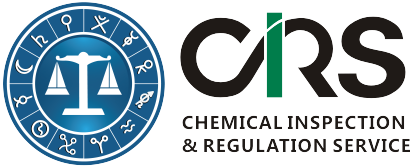The differences between the 4th revised edition UN GHS, EU CLP regulation and China GHS summarized
The electronic version of the 4th revised UN GHS was finally released on 8 Sept 2011 on UNECE’s website. Compared to the 3rd revised version, the major changes are listed as below:
- For hazard class ‘flammable gases’, 2 more hazard categories have been added. A flammable gas that is also chemically unstable is additionally classified in one of the two categories for chemically unstable gases: category A and category B;
- For hazard class ‘flammable aerosols’, 1 additional hazard category has been added. Aerosols which do not meet the criteria for inclusion in Category 1 or Category 2 (extremely flammable or flammable aerosols) should be classified in Category 3 (non-flammable aerosols). The name of hazard class has been changed to ‘Aerosols’ to include non-flammable aerosols;
- For hazard class ‘gases under pressure’, a note has been added:Aerosols should not be classified as gases under pressure;
- For hazard class ‘corrosive to metals”, if a substance or mixture is classified as corrosive to metals but not corrosive to skin and/or eyes, some authorities might not require the pictogram for the “corrosive to metals” to be displayed on a label if the product is in the finished state and packaged for consumer use;
- Hazard criteria for newly added hazard categories have been added.
- Cut-off values for category 1 & 2 mutagens/carcinogens/reproductive toxicants are more clearly defined.
The constant revision of UN-GHS will cause greater inconsistencies between the latest version of UN-GHS and GHS already implemented in many countries or regions. In Europe, the Regulation (EC) No 1272/2008 of the European Parliament and of the Council on classification, labeling and packaging (CLP) of substances and mixtures has been amended just 6 months ago by the Commission Regulation (EU) No 286/2011 of 10 March 2011 to align with the third revised edition of the GHS. In China, all 26 classification standards are based on the 1st version of UN-GHS. The labeling and SDS standards are based on the 2nd revised version of UN GHS. There has been no change or revision since those standards were adopted.
The following building blocks from the 4th revised edition of UN-GHS are not adopted in the latest CLP regulation yet:
- Chemically unstable gases category A and B;
- Non-flammable aerosols category 3;
- Flammable liquids category 4;
- Acute toxicity(oral, dermal, inhalation) category 5;
- Skin corrosion/irritation category 3;
- Serious eye damage/irritation sub-category 2A and 2B (CLP does have category 2);
- Aspiration category 2;
- Aquatic hazard – acute category 2 and 3.
The following building blocks from the 4th revised edition of UN-GHS are not adopted in China:
- Chemically unstable gases category A and B;
- Non-flammable aerosols category 3;
- Respiratory sensitization subcategory 1A & 1B (China does have category 1);
- Skin sensitization subcategory 1A & 1B (China does have category 1);
- STOT- single exposure category 3;
- Aspiration category 1 and 2;
- Hazardous to the ozone layer category 1.
CIRS has prepared an excel table to help companies better understand the differences between the 4th revised edition of UN GHS, CLP regulation and China GHS. This table is available here for download.
The 4th revised edition of UN GHS can be downloaded here:
http://live.unece.org/trans/danger/publi/ghs/ghs_rev04/04files_e.html
For further information about the history of revisions of the UN GHS, please click the following link: http://live.unece.org/trans/main/dgdb/dgcomm/ac10rep.html
To follow more events, free regulatory updates and publications from CIRS, please subscribe our monthly newsletter:

